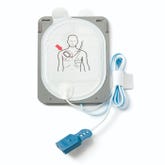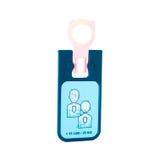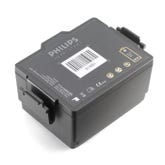Who Can Use an AED?
- Mar 9, 2020

Who can use an automated external defibrillator (AED)? You can. Who should use an AED? You should.
AEDs are designed to be used by non-medical personnel, such as firefighters, police officers, lifeguards, flight attendants, security guards, teachers, family members of high-risk persons, and bystanders. That includes you!
Anyone can use (and should use) an AED in the event of sudden cardiac arrest (SCA). The goal of AEDs and public access defibrillation programs ensure access to defibrillation when needed as quickly as possible. CPR along with AEDs can dramatically increase survival rates for sudden cardiac arrest.
Although formal training in the use of an AED is not required, AED and CPR certifications are recommended to help you increase your comfort and level of confidence. However, AEDs are intended for use by the general public — with or without specialized training.
What is an AED and How Does It Work?
What is an AED and how does it work? An AED is a lightweight, portable device that delivers an electric shock through the chest wall to the heart. The shock can potentially stop an irregular heartbeat (arrhythmia) and allow a normal heart rhythm to resume following cardiac arrest.
SCA occurs when the heart malfunctions and stops beating unexpectedly. If not treated within minutes, it quickly leads to death.
AEDs can be used by non-medical personnel — which includes lay rescuers and bystanders just like you! Once the AED electrodes are attached to the victim’s chest, the device automatically checks and analyzes a victim’s heart rhythm. The device calculates whether defibrillation is needed. If it is, a recorded voice prompts the rescuer to press the shock button on the AED or, depending on the model, automatically delivers the shock.
The shock effectively stuns the heart and stops all activity, giving the heart a chance to resume a normal heart rhythm. Audio and text prompts — depending on the model — guide the user through the process of administering shock or performing CPR. AEDs advise a shock only when absolutely necessary.
Where Can I Find an AED?
Potential rescuers should look for AEDs in public areas such as sports venues, community centers, shopping malls, casinos, amusement parks, airports, airplanes, businesses, convention centers, hotels, schools, and doctors’ offices.
Finding the best location for an AED takes some thought and consideration. Often, however, they can be found in highly trafficked areas in well-marked and accessible wall cabinets. Popular locations include hallways, main corridors, near elevators, cafeterias, or main reception areas.
Why is CPR so Important if I have an AED?
AEDs are designed to shock a heart back into a normal rhythm. They aren’t designed to keep blood flowing to critical organs. CPR, or cardiopulmonary resuscitation, is an easy-to-learn first aid technique that can keep the victims of sudden cardiac arrest (SCA) or other medical emergencies alive until medical professionals can take over.
CPR keeps blood pumping through the body, which helps maintain vital organ function. CPR has two primary goals: to keep oxygen flowing in and out of the lungs and to keep oxygenated blood flowing throughout the entire body.
For more information, check out (Almost) Everything You Need to Know About CPR and AEDs.
All of us here at Cardio Partners and AED.com are ready to help you find the AED that’s best for your business, home, or organization! And if you’re looking for CPR, first aid, and AED certifications, we have you covered on that front as well. Visit AED.com or call Cardio Partners at 800-544-0004. You can also email us at customerservice@cardiopartners.com.
DISCLAIMER: Information and resources found on the cardiopartners.com and aed.com websites/blogs are intended to educate, inform, and motivate readers to make their health and wellness decisions after consulting with their healthcare provider. The authors are not healthcare providers. NO information on this site should be used to diagnose, treat, prevent, or cure any disease or condition.








 CALL US:
CALL US: